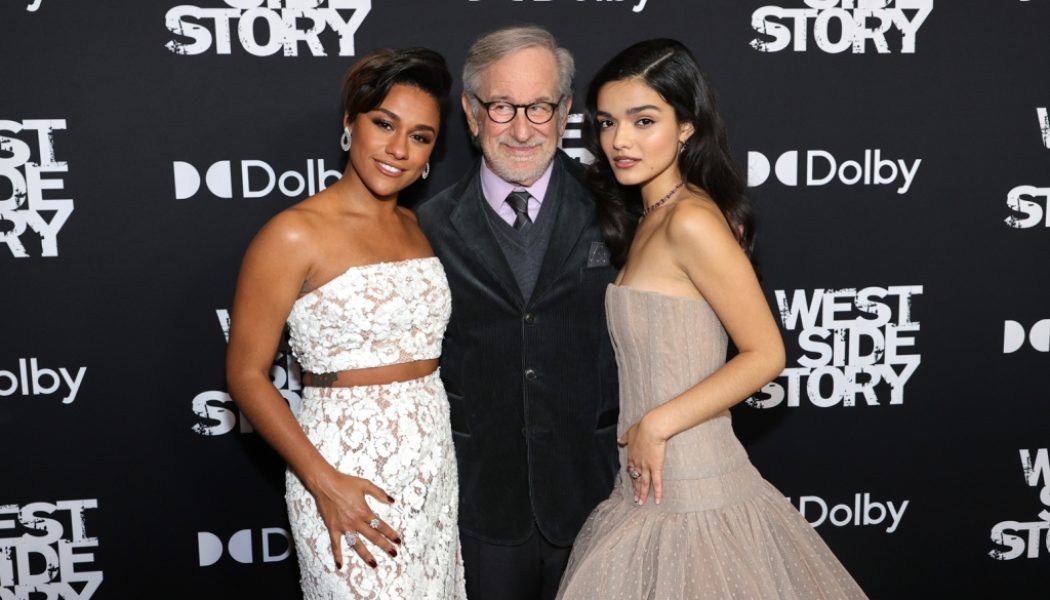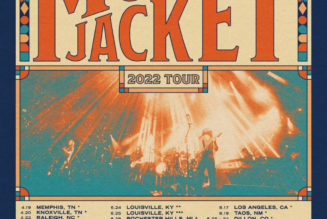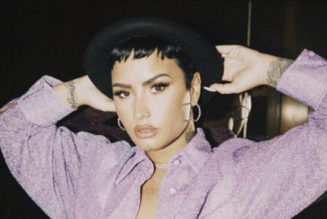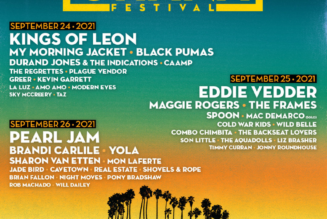
There’s a saying that you should never meet your idols, but Rachel Zegler and Ariana DeBose beg to differ.
It was the spring of 2019 when Rita Moreno showed up to rehearsals for the new West Side Story movie at Gelsey Kirkland dance studios in Brooklyn’s Dumbo neighborhood. She is an actor and executive producer on the film, but to many of the young members of the cast, the first Latina actress to win an Academy Award meant so much more than that.
Moreno strode into the room and asked to meet the person playing Anita, the heir to her Oscar-winning role from the 1961 adaptation of the musical, but she was nowhere to be found. “I was having a full-fledged panic attack,” DeBose admits. “I hid underneath the bleachers for like 20 minutes until I could get myself together.”
Meanwhile, Zegler, the high schooler turned leading lady, approached with her mother to shake Moreno’s hand, but Moreno already was familiar with the newcomer’s work: “Oh, your voice is so lovely, I shit a brick!”
Recovering from that doozy of an icebreaker, Zegler introduced her mom, who had learned English in the 1970s by watching Moreno on the educational children’s series The Electric Company. The legend instantly launched into her signature catchphrase from the show — “Heyyy, you guyyys!” — and Zegler’s mother burst into tears.
“It was the craziest compliment I’ve ever gotten,” says Zegler, now 20, laughing as she recalls Moreno’s rather unique praise of her vocal ability, “and then my mom’s crying, and then I look and Ariana’s hiding in the corner.”
DeBose, 31, confirms the memory. “I was like, (miming tears) ‘This is all so much!’ “
After DeBose gathered herself, Moreno invited her to lunch. “She calmed me down and gave me the space to feel my feelings,” the younger actress says. “She was like, ‘It’s OK. It’s a lot.’ ” Moreno also dispensed a critical piece of wisdom: “You passed the audition. You got the part. There’s a reason for that.”
The three women have become the most celebrated performers in West Side Story, Steven Spielberg’s adaptation of the classic 1957 stage musical. Although the film has so far failed to overcome the pandemic box office downturn, all three are nominated for Critics Choice Awards, Zegler and DeBose have already won Golden Globes, and DeBose is additionally a Screen Actors Guild Award nominee. Oscar nominations could be on the horizon, with DeBose widely considered a frontrunner for a nod in the supporting actress race.
And with a seven-decade age gap between the returning icon and the relative newcomers, they represent a continuum of experiences of women and particularly Latinas in Hollywood, comprising a broad spectrum of perspectives the industry is still struggling to fully comprehend (just witness the conversations and think pieces around trending topics like colorism, #MeToo and “Latinx”).
Three years after their first meeting, the women are thick as thieves — or, as Moreno and DeBose are fond of saying, like Frick and Frack — prone to spontaneous outbursts and profanely funny digressions in both Spanglish and show tune. But all are game and capable of getting serious when it comes to talking about the evolution of art in the ongoing quest — or battle — for truer representation.
“It’s hard to gauge [the current state of progress] not knowing what the fullest extent of a progression could be,” says Zegler. “If you don’t know what the best-case scenario is, how can you gauge where you’re at? Rita understands more than we can about what it was like then versus what it’s like now. There’s always a ways to go.”
At 90, Moreno — who completed her EGOT 24 years before Zegler was born — carries herself with the bearing of an industry legend who generates respect without demanding it, meaning that she feels no compunction getting “raucous,” as she puts it, with her younger colleagues. She agrees: “We’ve definitely made progress, but that doesn’t mean we’ve come home, exactly.” Adds DeBose, the working stage actor turned ascendant star who favors direct yet nuanced responses: “This isn’t the moment that we stop doing the work we’re doing and pat ourselves on the back.”
West Side Story, of course, is a take on Romeo and Juliet, transported to 1950s New York City, with the white Jets and the Puerto Rican Sharks standing in for the Montagues and the Capulets. In the interpretation of Tony Kushner, to whom Spielberg turned to write the screenplay, it’s more than the story of star-crossed lovers caught in a gang war.
“It really divides along gender lines,” says Kushner of his version. “The male side is the white side, and it’s the Jets. But on the Puerto Rican side, the story is carried not by the men, but the women.” With Zegler as Maria, the ingenue who falls in love with Tony at first sight, and DeBose as Anita, the wise and headstrong girlfriend of Maria’s brother Bernardo (and an older sister figure to her), what tips the scales for this female-forward interpretation is a key alteration Spielberg and Kushner made early on: the replacement of side character Doc with his widow, Valentina, a newly created (and much expanded) character played by Moreno.
In the original, Doc is the kindly shop owner who employs Tony — and later, crucially, interrupts the Jets’ sexual assault of Anita. “I remember feeling very sorry for Ned Glass [who played Doc in the 1961 film],” Moreno says. “It was a non-part. He was really there to stop the rape.”
So when Spielberg offered her the role, she initially declined. “I’m so flattered, thank you, but I don’t do cameos,” she told him, privately disappointed by the gimmick: “That’s not the kind of director I figured he would be.”
Spielberg quickly clarified his intent and sent her the script, which gave Valentina added scenes, a musical solo (“Somewhere,” sung by Tony and Maria in the ’61 movie) and a backstory. “There’s a whole 30-page biography of Valentina that I wrote for Rita,” says Kushner, who adds that the two have discussed developing a prequel miniseries around the character.
“This is one of the few times in my life that I love myself in something,” Moreno says. “And it’s all due to Tony [Kushner]. I actually looked forward to my scenes when I was watching the movie, because he gave her so much dignity, and all the stuff that I’ve dreamed of for a hundred years.”
Moreno’s inclusion “answered one of the big questions, which is, what is our relationship to the ’61 film?” says Kushner. “We never wanted to make a movie that was fixing it or canceling it or replacing it. We didn’t want to be in competition with it, because [Spielberg and I] both really love it. Rita, who was so much the heart of that movie, is also the heart of this movie in so many ways.”
Zegler concurs. “It was more about Rita than anything for me,” she says of what Robert Wise and Jerome Robbins’ 1961 film, starring Natalie Wood as Maria, meant to her when she watched it on Turner Classic Movies as a child. “As much as I idolized the Natalie Woods of the world, I wanted to be Rita.”
Her own casting story is a Cinderella tale with a Gen Z spin. Zegler, whose father is Polish and mother is Colombian, was a musical theater geek performing in school and local musicals and posting covers and the occasional original song on YouTube. (A month prior to her life-changing West Side Story casting announcement, her cover of “Shallow” — from, fittingly, A Star Is Born — had gone viral, racking up millions of views for the then-unknown.)
She was 16 when she responded in January 2018 to the film’s open casting call with a video rendition of “Me Siento Hermosa” (the Spanish-language version of “I Feel Pretty,” translated by Lin-Manuel Miranda for the 2009 Broadway revival). When the cast was announced after a full year of callbacks and chemistry and screen tests, the trades introduced the new Maria as “New Jersey high school student.”
For the next three years, she found herself in the uneasy purgatory of being crowned Hollywood’s next big thing, landing high-profile projects like the DC Comics sequel Shazam! Fury of the Gods and Disney’s live-action Snow White, without the payoff of having anyone actually see her work. “There was a huge imposter syndrome shadow that loomed over me,” she says. “I was reading these horrible things people were saying, like, ‘What kind of dirt does she have on whoever holds the puppet strings in Hollywood? Because that has to be the only reason she’s booked gigs while waiting for this movie to come out.’ As much as it’s bullshit to read, it takes a toll.”
Zegler thinks back to her 16-year-old self, nearly four years to the day after she sent in that fateful self-tape. “I would just warn her before she pressed ‘record,’ ” she says now. “I don’t think it would have changed my mind, but I would’ve just said, ‘Hey, you know how you really like this quiet life? Just remember that. And take it in while you can.’ ”
DeBose, for her part, was reluctant to audition for West Side Story when casting director Cindy Tolan reached out to the Hamilton alum’s agent. “When I thought of Anita, I thought of Rita Moreno, Chita Rivera — Debbie Allen and Valarie Pettiford have played the role, but the most famous incarnations of this character just do not look like me, and they’re beloved portrayals,” says the Raleigh, North Carolina, native, who was then starring in the Donna Summer musical Summer, for which she would later earn a Tony nomination.
“I was like, ‘I don’t know if there’s space for [my] interpretation, because I would have to play her as a Black woman,’ ” says DeBose. “Because otherwise, I didn’t think there was anything to be added [to the role]. It had been done, and beautifully so.”
DeBose points to specific moments in West Side Story that are affected by Anita’s Afro-Latina identity. “Some of it is infused in the script,” she says. “There are flat-out aggressions toward Anita” — such as the way Lieutenant Schrank interrogates her following Bernardo’s death — as well as microaggressions from those closest to her. In the newly added breakfast scene preceding “America,” Bernardo tells Anita not to get involved in his lecture to Maria against consorting with the white Jets. “Bernardo essentially says it’s a family matter, and she says, ‘Oh, so all of a sudden I’m not your family?’ ” she recounts. “The cultural subtext is that darker-melanated Latinos can feel like the redheaded stepchild.”
Says Spielberg, “Ariana needed to bring her entire existence into this character. The biggest challenge for her was to own her Anita, and from her audition all the way through production there was an empowerment about her that was just so palpable. I’m not sure anyone can watch Ariana’s performance and not feel how tightly she had her arms around her own Anita and created her own special light.”
One of the things that I loved in the reviews for [the 2021 West Side Story] is that people kept saying it seemed to be in conversation with the ’61 film. It’s an unusual relationship between two works of art,” Kushner says. “Also, it makes us think about the 60 years between that film and this one; how much progress has been made toward this promised land, and how much progress hasn’t.”
By all accounts, Moreno — the throughline between the two films — was a knowledgeable but not intrusive presence on set. “Rita was at once omnipresent and also incredibly generous with the cast,” says Spielberg, adding that her experience both in making the first film and actually living as a Puerto Rican woman in New York in the 1950s were invaluable assets. “We had 50 actors who were appearing in their first film ever, so the daily mentorship she provided is hard to overstate.”
Moreno describes her input as a “back door” approach. “I wanted to be modest and careful,” she explains. “I didn’t want to say, ‘You’re not going to do that, are you?’ I stated my concerns about the original film” — like the use of brownface makeup on all the Puerto Rican characters, including Moreno — “and [Spielberg] and Tony were so conscientious.”
West Side Story has a cherished place in the cultural canon in some circles; in others, it is less revered. The musical was originally conceived as a feud between Irish Catholic and Jewish families, but its four white Jewish creators — director and choreographer Robbins, composer Leonard Bernstein, playwright Arthur Laurents and lyricist Stephen Sondheim — eventually settled on a ripped-from-the-headlines approach, finding inspiration in the 1950s news media’s breathless coverage of Latino juvenile delinquents.
Between the show’s historic exclusion of authentic casting, superficial representation of Puerto Rican identity, perpetuation of criminal stereotypes and maligning of the island (most notably in the song “America”), many critics, particularly those of Puerto Rican or Latino descent, have asked whether West Side Story really deserves so many revivals.
“Nothing becomes a cultural touchstone by accident, and the more a certain narrative gets repeated, the more sentimental associations it accrues,” said New York Times Magazine contributing writer Carina del Valle Schorske in a debate among critics about West Side Story‘s legacy in the Times in December. “[West Side Story] is a monument to the authority of white Americans to dominate the conversation about who Puerto Ricans are. And each revival renews that authority and co-signs the narrative for a new generation.”
Behind the scenes, the new West Side Story‘s creative team was mostly white, including longtime Spielberg collaborators like producer Kristie Macosko Krieger, cinematographer Janusz Kaminski and production designer Adam Stockhausen, and Broadway veterans like choreographer Justin Peck and composer Jeanine Tesori, who oversaw vocals. Of the major creative contributors, only Venezuelan conductor Gustavo Dudamel is of Latin descent.
Still, Spielberg sought to be more inclusive of authentic portrayals than past stagings were, casting Latino performers in all the Puerto Rican parts, holding a town hall about the movie at the University of Puerto Rico in December 2018 before filming got underway and hiring two consultants to school the cast and crew in Puerto Rican culture and history: Julio Monge, a New York-based stage performer and director, and Virginia Sánchez Korrol, professor emerita at Brooklyn College’s Department of Puerto Rican and Latino Studies.
All this puts the onus on the film’s Latino actors — particularly its trio of Latina stars — to straddle the line in the debate. “The actors bear more of the brunt of the societal accountability machine,” DeBose allows.
In the film, Moreno’s character Valentina faces a similar conundrum as the surviving half of an interracial couple in an ethnically divided neighborhood. The Jets — whom Kushner calls “little racist xenophobes” — “like hanging out at [Valentina’s] shop, so they’ve decided she’s not really one of these people they don’t like. She’s kind of an honorary white person,” he says, “which puts her in a very problematic position. … It set up opportunities like the moment when she stops Anita from being raped, and then Anita turns on her and sort of calls her a traitor.”
While filming that sequence was heavy on both Anitas (even with the 2021 movie’s provision of an intimacy coordinator, a job Moreno had never even heard of), the new film is a lot more unflinching in calling out the characters for their actions. In a West Side Story first, Valentina calls the Jets “rapists,” whereas, according to Moreno, previous productions have referred to that sequence as “the taunting scene.” And in one of the film’s many intentionally unsubtitled lines of dialogue, Anita spits out to Valentina in Spanish, “You are harboring these pigs.”
The exchange “shocked me to death, me as Rita,” says Moreno, causing her to consider her character in a different light. “This woman seems so noble and above everything, but what was I doing letting those kids in there?”
Such considerations exceeded the realm of art when, in June 2020, a woman accused Ansel Elgort, who stars as Tony, of sexually assaulting her in 2014 when she was 17 and he was 20. The allegations surfaced on social media nine months after shooting wrapped. Elgort, who has responded that his relationship with the woman was “brief, legal and entirely consensual,” has participated in group interviews to promote the film but otherwise has not done any press. And so it’s again the women who are left to address the elephant in the room. (Spielberg declined to comment on the matter.) They do not shy from the Elgort question (nor from invoking his name in recalling on-set tales, with Moreno praising his singing ability), even as they remain circumspect in their answers.
“Nobody really knows what’s going on in anyone’s head. Only the people who were involved in that situation know what actually went down,” DeBose says. Adds Moreno, “I think it would have been absolutely horrendous and wrong for anyone to take sides in that matter. It’s not for me to make those judgments.” As Elgort’s romantic partner in the film, Zegler is the co-worker most often asked to weigh in. “We made a movie two and a half years ago, and a lot has gone on in the world since then,” she says. “A lot has changed very publicly, and privately as well. There’s been a lot of awakening. You just hope that the people involved are OK, that they are asked in a respectful manner and that they are given the opportunity to answer for themselves.”
As with so many other major studio films in the pandemic era, the release of West Side Story was pushed a full year in hopes of packing audiences in to movie theaters to see it. After finally opening exclusively in theaters in early December, the film’s critical and commercial fortunes have diverged. A frontrunner for the Academy Awards, the $100 million movie nonetheless has been unable to beat the pandemic trend, earning just $60.4 million worldwide ($35.1 million domestically) as of press time.
Zegler is nonetheless proud of the film they made, calling it “a huge leap forward” from previous adaptations, but adds that she expects West Side Story to continue to evolve. “In the same way that Bob Wise and Jerry Robbins probably thought they did right by it back in the 1960s, I look forward to future iterations,” she says. “That’s why art is so fantastic: It can keep being adapted to move with society’s vision as well as the original.”
Moreno already has a suggestion for the next one. “Now that I’ve seen the [new] film a bunch of times, I now think, ‘Why do all the Hispanic guys have to have accents?’ That just now occurred to me,” she says. “We were so indoctrinated into that aspect of the original, but it wasn’t really necessary.”
The three women hope that Hollywood will continue to refine and expand its portrayal of Latinos, now that Moreno is no longer one of the few torchbearers. “We had a great year for Latin rep in film,” says Zegler. “We had Encanto and Vivo and In the Heights.” Although some industry watchers have interpreted Heights‘ and West Side Story’s poor box-office returns as auguring poorly for future Latin-centric films, the actresses reject the premise. “We have to stop lumping Latino movies as the same thing,” DeBose says. “We don’t do it to Caucasian films, so why are you doing it to all these BIPOC films?”
Zegler says she understands why box office is important but insists it’s not a film’s raison d’etre. “At the core of it is, how does Hollywood know to make more Latin stories if they don’t perform?” she says. “Of course. That’s why we push so hard, that’s why we promote the hell out of [the movie], because we want people to see it, and therefore the higher-ups will see that as the public deeming us as having worthy stories to tell.
“But at the end of the day,” she adds, “the stories are worth it whether people believe it to be or not. We’re not going anywhere. We’re here now.”
[flexi-common-toolbar] [flexi-form class=”flexi_form_style” title=”Submit to Flexi” name=”my_form” ajax=”true”][flexi-form-tag type=”post_title” class=”fl-input” title=”Title” value=”” required=”true”][flexi-form-tag type=”category” title=”Select category”][flexi-form-tag type=”tag” title=”Insert tag”][flexi-form-tag type=”article” class=”fl-textarea” title=”Description” ][flexi-form-tag type=”file” title=”Select file” required=”true”][flexi-form-tag type=”submit” name=”submit” value=”Submit Now”] [/flexi-form]










Tagged: Culture, entertainment blog, Movies, music blog, Musicals, NEWS, TV/Film